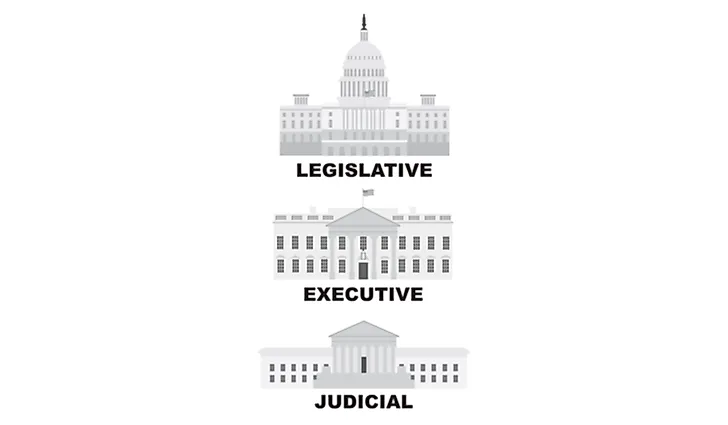What are the Three Branches of Government?

The American government is based on the doctrines of republicanism and federalism, in which authority is shared between the state governments and the federal governments. The American Federal government has three branches: the judicial, the executive, and the legislative. The American constitution stipulates the power of these branches while using the checks-and-balances system to ensure that no part of the government is more powerful than the others.
The Executive Branch
The power of the Executive arm of the government is vested on the American president. The president is elected by the Electoral College of all states including the District of Columbia. The president is the head of the government and the country. The executive branch is made up of 5 million people including 600,000 postal employees and over a million active-duty military personnel. The president can appoint federal judges and court justices, enact executive orders, and can pardon criminals who were convicted for offenses against the federal government.
The second-highest ranking official in the federal government is the vice president. The vice president’s duties are established by the legislative branch. The vice president has the power to cast the tie-breaking vote in the House of Senate. The 15 federal executive departments deal with the day-to-day running of the Executive branch of the government. The president appoints the executive department's heads and is approved by the Senate.
The Legislative Branch
The legislative branch of the U.S. government is referred to as Congress. It is bicameral (made up of the Senate and House of Representatives). The Senate is composed of two senators from every state regardless of its population. The Senate has 100 senators who serve a 6 year term. The House of Representatives is made up of 435 members, each representing an electoral constituent which is known as a congressional district. All the representatives serve for two years. The number of representative every American state depends on its population. Other than the 435 voting members, the House of Representatives has six non-voting members.
Congress has the power to impeach the federal judge, the president, and any other federal officer. The House of Representative votes to impeach a federal official while the Senate decides if the official should be refused. All revenue raising bills must come from the House of Representatives. The Senate approves various presidential appointments including department secretaries, federal judges, and the cabinet officers among others.
The Judicial Branch
The Judicial branch is made up of the Supreme Court and numerous lower federal courts. The 1789 Judiciary Act divided the country jurisdictionally into various judicial districts while creating federal courts in all these districts. The Supreme Court deals with controversies and cases relating to the interpretation of the constitution, the dispute between cases. The Judicial arm of the government also handles issues pertaining to the federal government. The Judicial court can declare an executive or legislative action unconstitutional. The constitution does not mention the judicial review’s power. The president selects the members of the federal judiciary while the Senate confirms them. The judicial branch is composed of the Supreme Court 94 federal judicial-district courts, and 13 courts of appeals.











